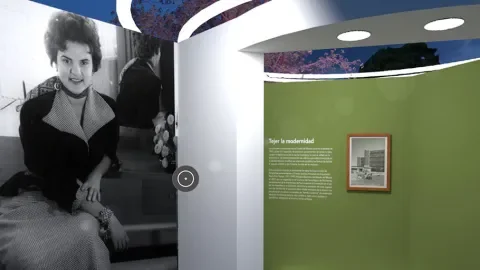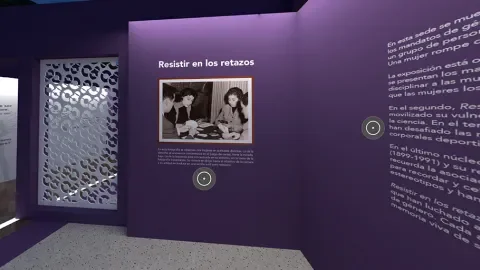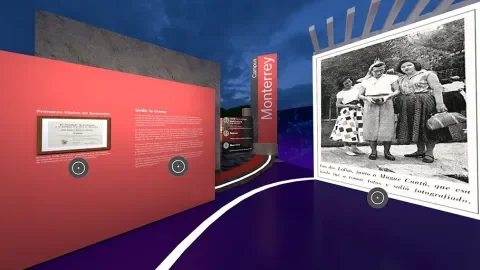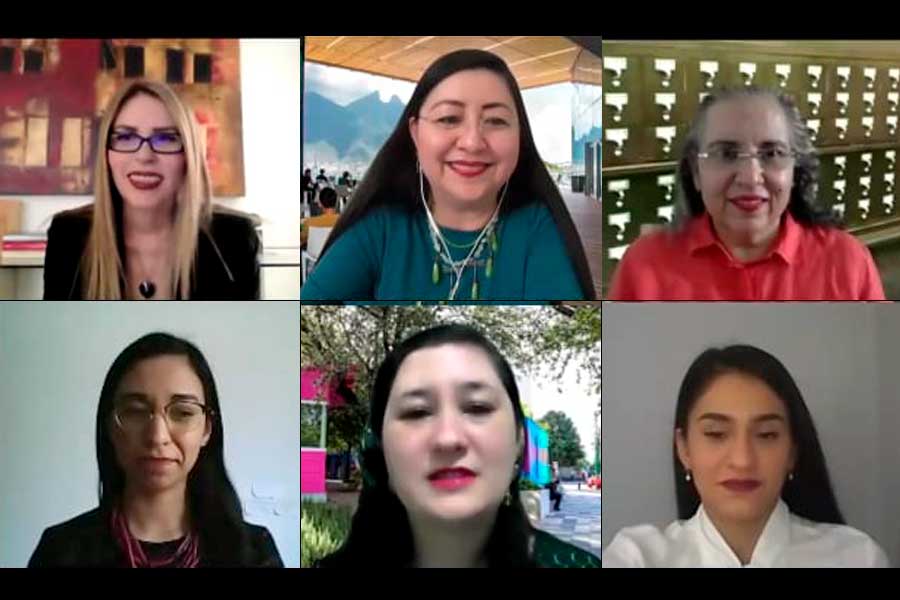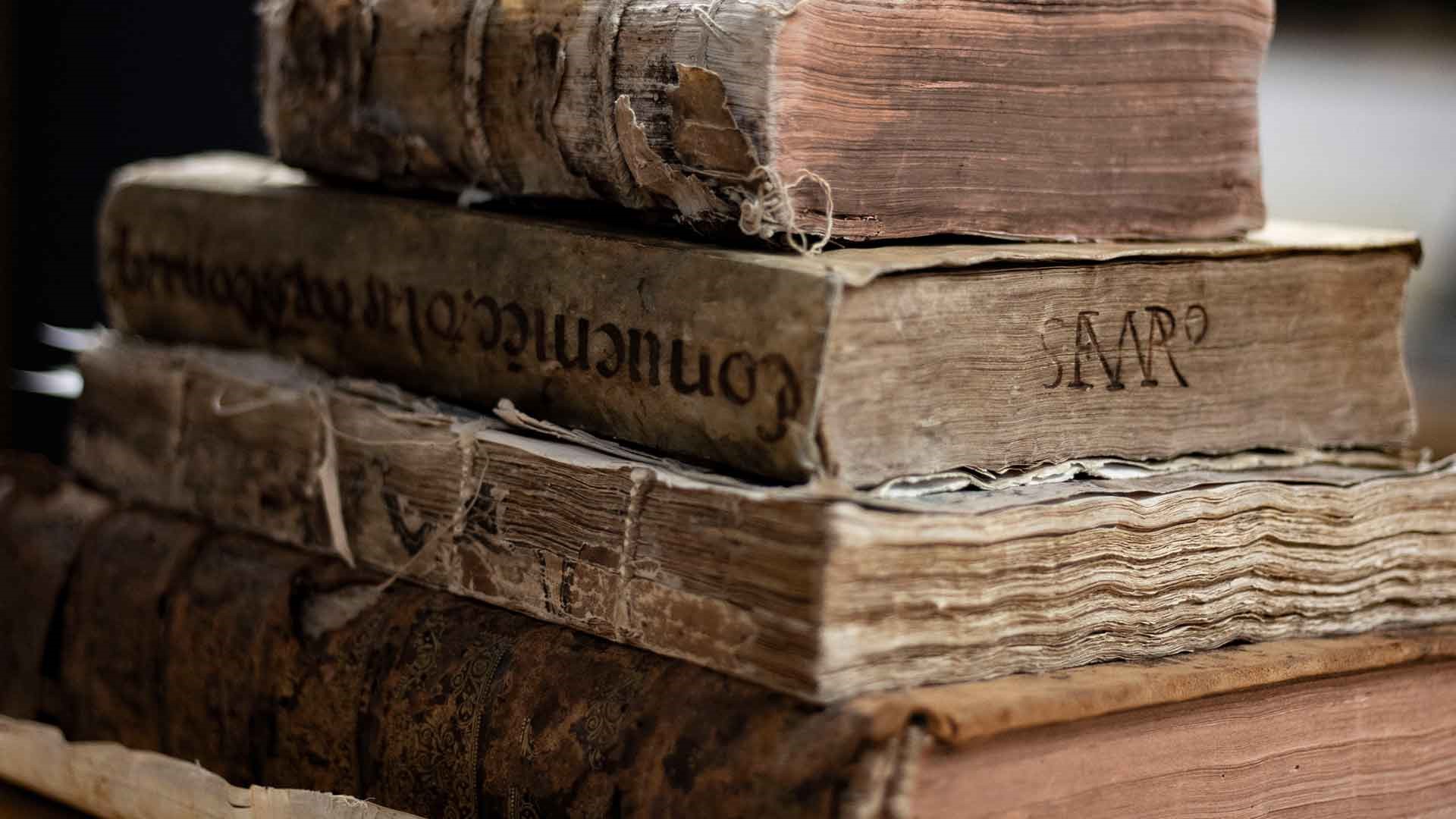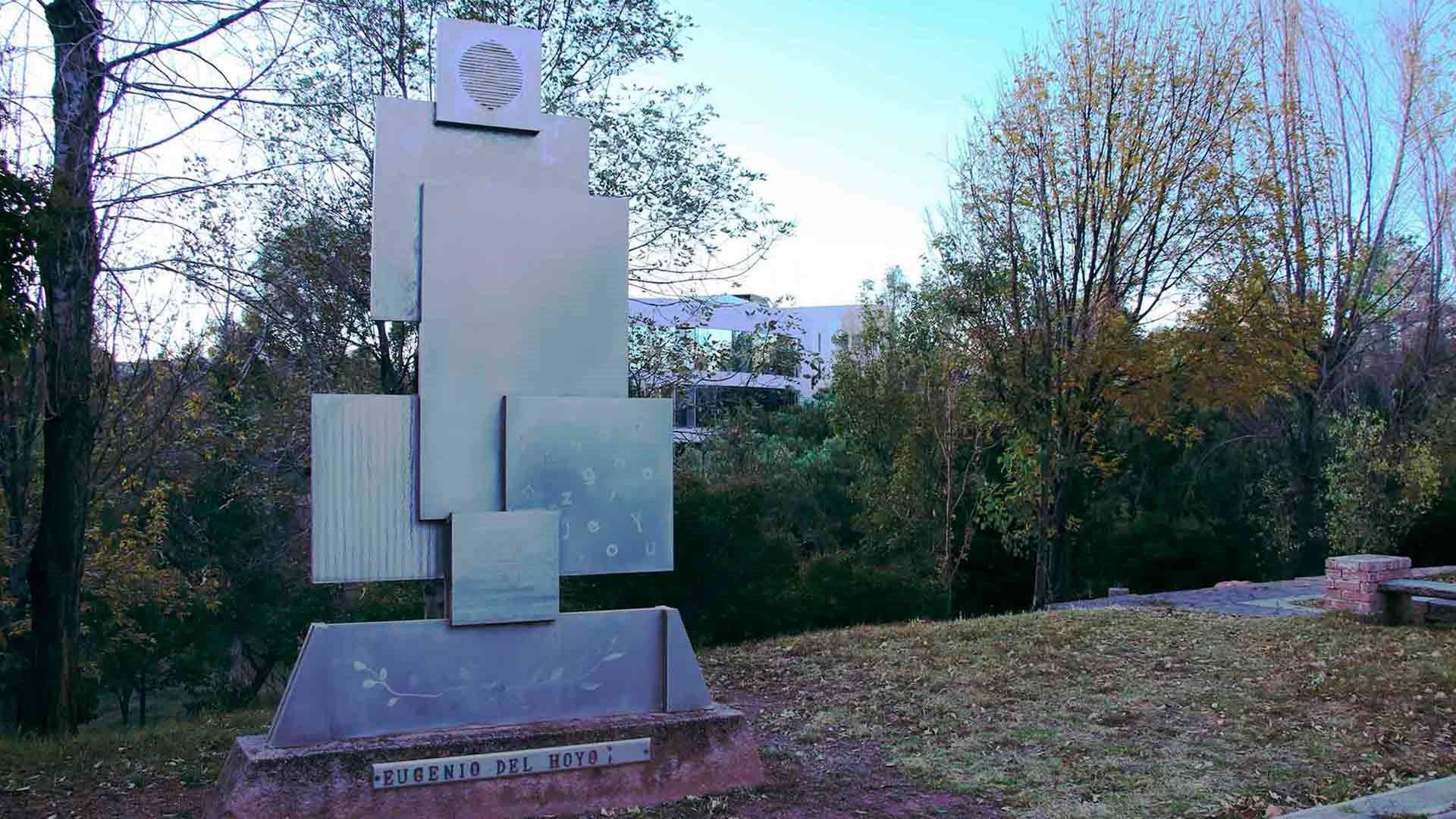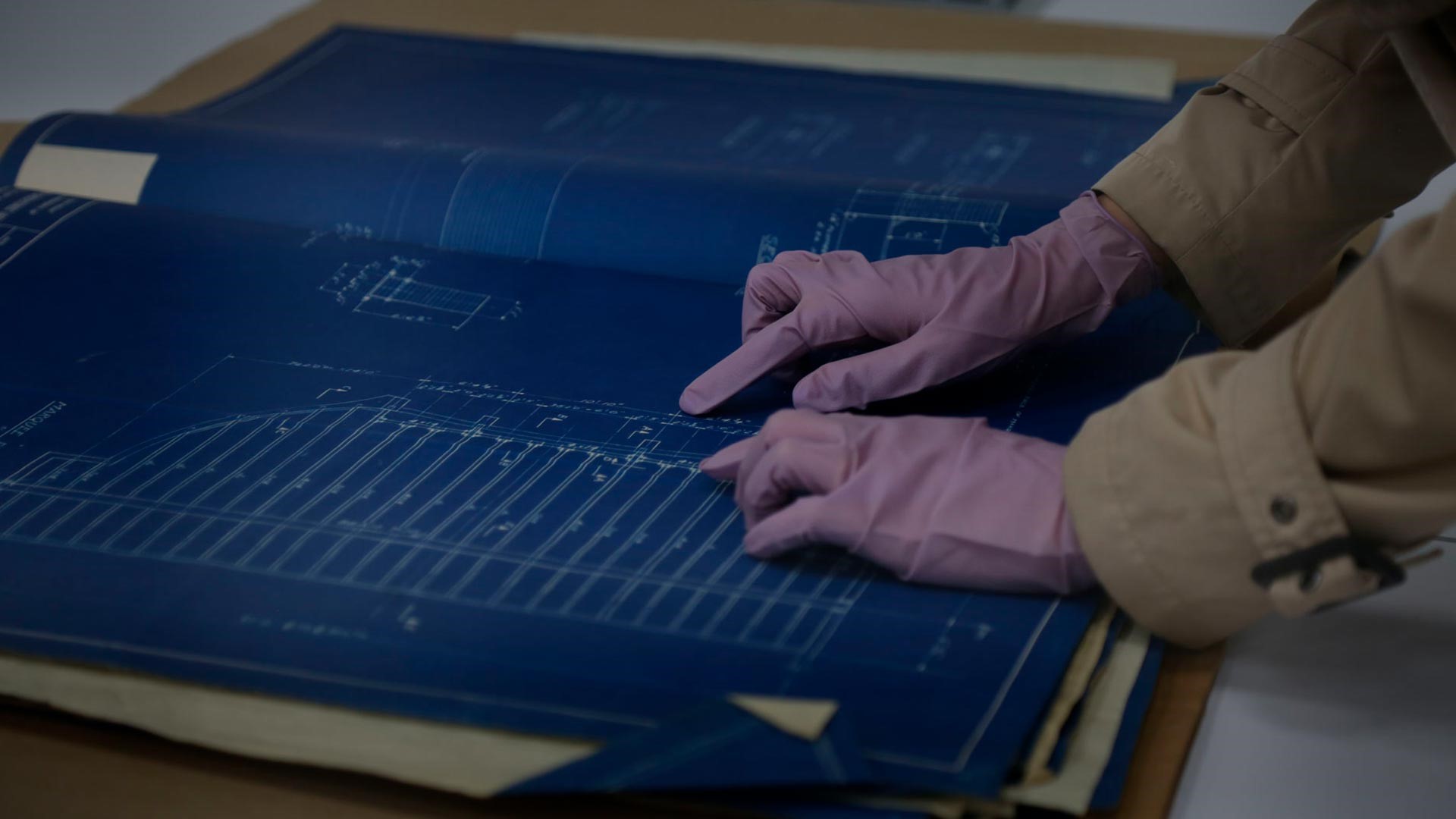Cultural Heritage
The Tecnológico de Monterrey guards, preserves, keeps and promotes material goods considered primary sources of documentary and art collections with historical, aesthetic or intellectual value. These objects are relevant as products of human creativity; they represent the identity and memory of our institution and of Mexico.
It consists of a collection of visual, textual, and virtual documents spanning the 16th to the 20th century, with significant value for the Mexican community and for all humanity. These documents are considered a legacy of the past and a fundamental resource for the present and future, The documentary collectoins are located on various campuses of the Tecnológico de Monterrey.

This is one of the principal archives in Zacatecas and houses documents related to taxes, mining and the economic activities of the viceroyalty (mainly 17th and 18th centuries). For decades, this collection was kept in the Clements Library at the University of Michigan and came back to Zacatecas in 1993. This collection can be consulted in the Institutional Repository: https://repositorio.tec.mx/handle/11285/636332
Location: Campus Zacatecas
Contact: patrimonio_documental@servicios.itesm.mx
Image: 2nd Zacatecas Lancers Corps, 1863. Historical Archive Fund of Real Caja de Zacatecas 1576-1936. Collection of the Society of Friends of Zacatecas, A.C. on loan to Tecnológico de Monterrey©. Memory of the World Registry of Mexico, UNESCO, 2021. Cultural Heritage of Tecnológico de Monterrey©. Photo: Anylú Hinojosa
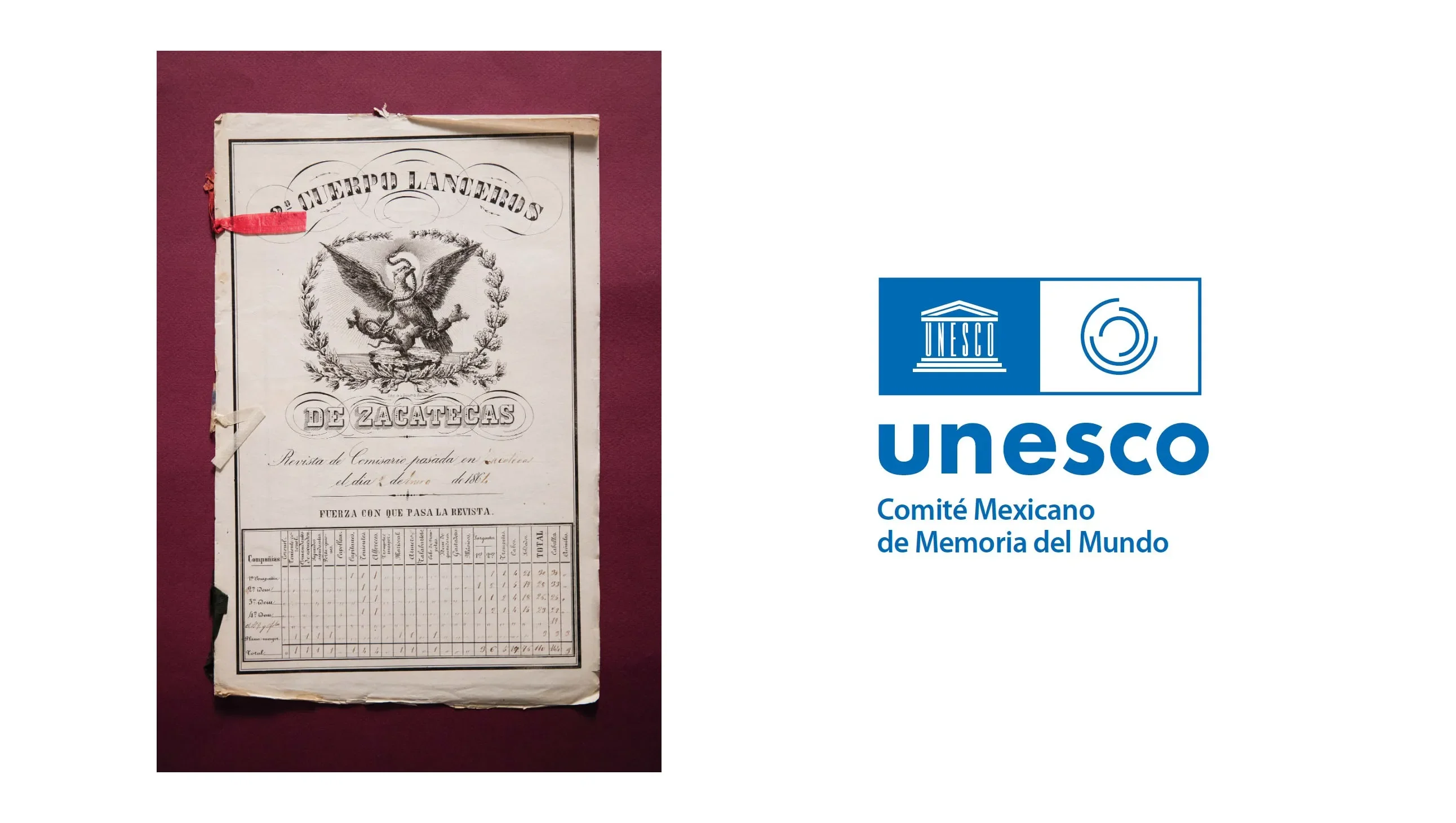

Archive of architectural plans by Gustavo Aguilar Beltrán, renowned architect from Hermosillo, Sonora. The collection covers housing, stores, offices, gas stations, town planning works. The plans date from 1940 to 1980.
Location: Campus Sonora Norte
Contact: patrimonio_documental@servicios.itesm.mx
Image: Gustavo Aguilar Beltrán (with the collaboration of the drawing by Héctor Rivas Bringas), Draft of the Hotel Laval Cafeteria, s/f. Gustavo Aguilar Beltrán Archive. Cultural Heritage of the Tecnológico de Monterrey©.


The Special Collection consists of more than 20 documentary collections, including books, pamphlets, handwritten and typewritten documents, periodicals, maps, posters, proclamations, and lithographs. The collections are organized and named according to the name(s) of the person(s) who made donations to the Tecnológico de Monterrey. These documentary collections include notable collections such as the Cervantine Collection, the Incunable Collection, the Firebrand Book Collection, the Sor Juana Inés de la Cruz Collection, and the 14th-Century Mexican Prints Collection. Of equal historical importance in the PhotoLibrary, wich houses important Funds such as the Personal Archive of Architect Mario Pani Darqui, the Sandoval-Lagrange Fund, the Agustín Basave Fund, and the Conde Zambrano Fund. These collections can be consulted in the Institutional Repository: https://hdl.handle.net/11285/636329
Location: Campus Monterrey
Contact: coleccionesespeciales.mty@servicios.itesm.mx
(+52) 81 8358-2000, ext. 4066
Image: Miguel de Cervantes Saavedra (1547-1616), The Ingenious Hidalgo Don Quixote de la Manche, 1607. Roger Velpivs edition. Carlos Prieto Fund. "Cervantina Collection", "Miguel de Cervantes Saavedra" Special Collections Library. Cultural Heritage of Tecnológico de Monterrey©.


The Campuzano Collection is an antique collection named after Carlos Campuzano Oñate, a former advisor to the Estado de México Campus who bequeathed his invaluable library to the Tecnológico de Monterrey. It contains books published between thw 17th and 20th centuries, covering a variety of topics, including religion, literature, history, philosophy, law, and more. It was initially housed on the Estado de México Campus until 2015, when it was moved to the Ciudad de México Campus and placed in its current location.
Location: Campus Ciudad de México
Contact: patrimonio_documental@servicios.itesm.mx and daisy.arrieta@tec.mx
Image: Philosophical works of Father Juan Evsebio Nieremberg, of the Jesvs Company, Third volume. 1686. Carlos Campuzano Oñate Personal Library. Campus Ciudad de México. Cultural Heritage of Tecnológico de Monterrey©.


This collection stands out for its valuable works of Mexican literature from 19th and early 20th centuries. Although not all documents are part of the archive, this collection adds great value to the Tecnológico de Monterrey Documentary Heritage, as the subject matter of these works is related to several of the current lines of research at the School of Humanities and Education. At least 855 copies are over 100 years old, and many of the books are autographed, making them unique documents.
Location: Campus Querétaro
Contact: coleccionesespeciales.mty@servicios.itesm.mx and zdrodrig@tec.mx
Image: Phiphie cursus qui exnobili Subtiliu doctrina selectiera collectutus Felisitetiu sequixur Doctores Subtilissimum Venerabile nempe P. F. Joan..., Querétaro Special Collection. Antique Books and Autographed Books. Campus Querétaro. Cultural Heritage of Tecnológico de Monterrey©.

The Art Heritage comprises works of art commissioned by or donated to Tecnológico de Monterrey. All visual art expressions are represented, such as paintings, sculptures, graphics, photographs, drawings, ceramics, popular art, craftwork, among others.

Most of the three-dimensional pieces are abstracts, belonging to art period in Mexico in which particular importance was placed on public spaces. There are monumental works by Jesús Mayagoitia, Sebastián, Salvador Manzano, Yvonne Domenge. The medium-sized pieces are a creation from Irma Palacios, Kyoto Ota, Juan Soriano, Josefina Temín, Ernesto Álvarez, Jorge Yazpik, Gabriel Macotela, among others. In addition, each campus’s collection often includes a sculpture of the emblem that identifies the Tec team, Borregos, usually created by Miguel Peraza and Jesús Moreno, among other artists. A total of 231 sculptures represent one of the most abundant groups of art pieces in Tecnológico de Monterrey’s art heritage.
Image: Jesús Mayagoitia, Cuatro torres, 1991. Painted steel, 45 x 50 x 35 cm. Campus Estado de México. Cultural Heritage of Tecnológico de Monterrey©.


The collection includes almost 300 graphic art pieces, mostly lithographs, serigraphs, xylographs, monotypes and drypoint.
The artists whose works and careers have earned them a place in Mexico’s history of art and who are present at Tecnológico include José Guadalupe Posada, Rufino Tamayo, José Luis Cuevas, Vicente Rojo, Manuel Felguérez, Alfredo Zalce, Leonora Carrington, Carlos Mérida, Alberto Gironella, Jan Hendrix, Carmen Parra, José Castro Leñero, Boris Viskin, Santiago Rebolledo, Luis Nishizawa, Pablo O’Higgins, Vlady, among others.
Image: José Luis Cuevas, La carta, s/f. Lithography, 70 x 90 cm. Campus Estado de México. D.R© José Luis Cuevas/SOMAAP/México/2023. Cultural Heritage of Tecnológico de Monterrey©.


The 100 works on paper represent an assorted group of artists, such as Arnold Belkin, Boris Viskin, David Alfaro Siqueiros, Jorge González Camarena, José Chávez Morado, José Luis Cuevas, Carla Rippey, Fernando Leal Audirac, Flor Minor, among others. Several of these pieces are drafts for murals, as is the case of the drawings of the model that appeared in several of Camarena’s murals. A particularly interesting work, given its dimensions and quality,is Coatlicue by Arnold Belkin, a drawing in wax crayons and colored pencils.
Image: David Alfaro Siqueiros, Movimiento, s/f. Lyrical drawing made with acrylic paint on paper. Campus Estado de México. D.R.© David Alfaro Siqueiros/SOMAAP/México/2023. Cultural Heritage of Tecnológico de Monterrey©.


The collection includes approximately 200 photographs by authors such as Manuel Álvarez Bravo, Yolanda Andrade, Graciela Iturbide, Enrique Bostelmann, Gabriela Olmedo, Daniel Nierman, Gabriel Figueroa Flores, Ulises Castellanos are just some of the authors whose work is exhibited in the collection.
Image: Graciela Iturbide, Angelito mexicano, 1894. Gelatin silver process, 22 x 30 cm. Campus Estado de México. Cultural Heritage of Tecnológico de Monterrey©.


This group of objects contains some examples of Mexico’s creative traditions, such as feather art, papel picado (tissue paper with cut-out shapes), and textiles. Of particular note is the work by popular artist Aurelio Franco, who has devoted his work to promoting the feather art technique used profusely by pre-Hispanic cultures and, inspired by the ancient codices, has created works that are rich in colors, textures and history.
Image: Aurelio Franco, Chimalli, n.d., Mosaic of natural feathers on metal, 35 cm diameter. Campus Estado de México. Cultural Heritage of Tecnológico de Monterrey©.


Both emerging and established contemporary artists are represented, such as Carlos Orduña, Alejandra Zermeño, Violeta Islas, Miguel Ledesma, Hazael González, Hugo Lugo, Humberto Valdés, Ernesto Walker, Natalia Rodríguez, César Polack Ugarte, among others.
Image: Arnold Belkin, Two summits of America, n.d. Serigraphy, s/n, 34 x 91.5 cm. D.R.© Arnold Belkin/SOMAAP/México/2023. Cultural Heritage of Tecnológico de Monterrey©.


Gilberto Aceves Navarro is one of the most important representatives of Mexican painting, commonly associated with the artists of the so-called "rupture". This series of self-portraits is a set of 98 panels that the donated to the Tecnológico de Monterrey Campus Estado de México, in 1998.
Image: Gilberto Aceves Navarro, Autorretratos, 1998. Acrylic on drywalle. Campus Estado de México. D.R. © Gilberto Aceves Navarro/SOMAAP/México/2025. Cultural Heritage of Tecnológico de Monterrey©.

The total or partial reproduction of this work is prohibited by any means without previous and written consent of the Instituto Tecnológico y de Estudios Superiores de Monterrey.
Tecnológico de Monterrey has three Memory of the Word Registries awarded by UNESCO to certain documentary collections or Cultural Heritage collections. he first was awarded by the Memory of the World Register for Latin America and the Caribbean in conjunction with the National Library of Mexico in 2002; the second was awarded by the Memory of the World Register for Mexico in 2015; and the last was desiggnated by the Memory of the World Register for Mexico in 2021. These documentary collections were recognized for their universal value and relevance to humanity.

Documentary collection of the first printed works in the Americas. Given its great cultural value, this collection is included in the Regional Register of the Memory of the World, awarded by UNESCO, in conjunction with the National Library of Mexico. Tecnológico de Monterrey is the institution with the greatest number of volumes of a collection of this nature in the world.
Location: Campus Monterrey
Contact: coleccionesespeciales.mty@servicios.itesm.mx
(+52) 81 8358-2000, ext. 4066
Image: Alonso de Molina, Aquí comienza un vocabulario en la lengua castellana y mexicana, 1555. G.R.G. Conway Fund. "Miguel de Cervantes Saavedra" Special Collections Library. Memory of the World Register of Latin America and the Caribbean, UNESCO, 2002. Cultural Heritage of Tecnológico de Monterrey©.


Photographic archive with the work of Mario Pani Darqui (Mexico, 1911-1993), one of the most important Mexican architects of the 20th century. Mario Pani was an ardent promotor of functionalism and international style in his works, as well as of Le Corbusier’s ideas in Mexico. His legacy encompasses 136 projects in which he approached all typologies: housing, schools, public buildings, hospitals, offices, hotels, offices, commercial buildings, airports, town plans. This collection is included in the UNESCO Memory of the World Register - Mexico.
Contact: coleccionesespeciales.mty@servicios.itesm.mx
(+52) 81 8358-2000, ext. 4074
Link to Institutional Repository
Image: Guillermo Zamora, Ministry of Water Resources and Office Building: Av. Reforma and Lafragua, 1946. Mario Pani Darqui Personal Archive. "Miguel de Cervantes Saavedra" Special Collections Library. Memory of the World Registry of Mexico, UNESCO, 2015. Cultural Heritage of Tecnológico de Monterrey©.


The Historical Archive Fund of Real Caja de Zacatecas is comprised of more than 8,8oo documents, which record the administration and collection of taxes by the Royal Treasury in the city of Zacatecas, foreign locations, and northern Mexico. The collection highlights the two main activities, mining and trade, wich took place from the late 16th century to the early decades of the 20th century. The importance of this archive lies in the fact that this documentation records a social, cultural, and economic framework rooted in the extraction of silver. This documentary collection can be consulted in the Institutional Repository: https://repositorio.tec.mx/handle/11285/636332
Location: Campus Zacatecas
Contact: patrimonio_documental@servicios.itesm.mx
Image: 1791. To the General Directorate. Historical Archive Fund of Real Caja de Zacatecas 1576-1936. Collection of the Society of Friends of Zacatecas, A.C., on loan to the Tecnológico de Monterrey©. Memory of the World Mexico Registry, UNESCO, 2021. Cultural Heritage of the Tecnológico de Monterrey©.

The diversity of the documentary collection held by the Tecnologico de Monterrey Cultural Heritage makes it possible to form collections, which are assembled from different documentary holdings with a common theme. Others, due to their historical significance, are collections curated by one, two, or more individuals, who have created collections worthy of mention, such as those in the Tecnológico de Monterrey Photolibrary.

Photographic archive with the work of Mario Pani Darqui (Mexico, 1911-1993), one of the most important Mexican architects of the 20th century. Mario Pani was an ardent promotor of functionalism and international style in his works, as well as of Le Corbusier’s ideas in Mexico. His legacy encompasses 136 projects in which he approached all typologies: housing, schools, public buildings, hospitals, offices, hotels, offices, commercial buildings, airports, town plans. This collection is included in the UNESCO Memory of the World Register - Mexico.
Location: Campus Monterrey
Contact: coleccionesespeciales.mty@servicios.itesm.mx
(+52) 81 8358-2000, ext. 4074
Link to Institutional Repository
Image: Guillermo Zamora, Ministry of Water Resources and Office Building: Av. Reforma and Lafragua, 1946. Mario Pani Darqui Personal Archive. "Miguel de Cervantes Saavedra" Special Collections Library. Memory of the World Registry of Mexico, UNESCO, 2015. Cultural Heritage of Tecnológico de Monterrey©.


A set of rare books created during the infancy of the printing press. It contains seven printed works from between 1476 and 1500, which belong to the Ugarte, Conway, Robredo and Bernal Funds.
Location: Campus Monterrey
Contact: coleccionesespeciales.mty@servicios.itesm.mx
(+52) 81 8358-2000, ext. 3507
Image: Christopher Columbus, De Insulis nuper in Mari Indico repertis (Second letter from Columbus), 1494. Salvador Ugarte Fund. "Miguel de Cervantes Saavedra" Special Collections Library. Cultural Heritage of Tecnológico de Monterrey©.


Documentary collection of the first printed works in the Americas. Given its great cultural value, this collection is included in the Regional Register of the Memory of the World, awarded by UNESCO, in conjunction with the National Library of Mexico. Tecnológico de Monterrey is the institution with the greatest number of volumes of a collection of this nature in the world.
Location: Campus Monterrey
Contact: coleccionesespeciales.mty@servicios.itesm.mx
(+52) 81 8358-2000, ext. 4066
Image: Alonso de Molina, Aquí comienza un vocabulario en la lengua castellana y mexicana, 1555. G.R.G. Conway Fund. "Miguel de Cervantes Saavedra" Special Collections Library. Memory of the World Register of Latin America and the Caribbean, UNESCO, 2002. Cultural Heritage of Tecnológico de Monterrey©.


Collection of 32 original documents written in a diversity of Mexican languages between 1535 and 1821: Chinantec, Nahuatl, Kickapoo , Papantla Totonac, Otomi, Coahuiltecan, Pajalate, Tarasco, Cahita, Zoque, Opata, Tzotzil, Zapotec, Matlatzinga, and one in Otomi-Nahuatl.
Location: Campus Monterrey
Contact: coleccionesespeciales.mty@servicios.itesm.mx
(+52) 81 8358-2000, ext. 4066
Image: Author unknown, Prayer book in Zoque, 17th century. Salvador Ugarte Fund. "Miguel de Cervantes Saavedra" Special Collections Library. Cultural Heritage of Tecnológico de Monterrey©.


Set of photographs that portray family, social, cultural and political life in Monterrey and Mexican society from the 19th to the mid-20th century. The Tecnológico de Monterrey Photographic Library houses photographs donated to the Institution since 1953, with approximately 51,500 individual pictures, including, positives, negatives, glass plate negatives and slides from the 19th century on. The most outstanding topics are family, social, cultural, religious, industrial and political life in Monterrey and Mexican society from the end of the 19th century through the mid-20th century.
Location: Campus Monterrey
Contact: coleccionesespeciales.mty@servicios.itesm.mx
(+52) 81 8358-2000, ext. 4074
Link to Institutional Repository
Image: Jesús R. Sandoval, Obrero, 1925. Sandoval-Lagrange Fund. Photolibrary of Tecnológico de Monterrey. "Miguel de Cervantes Saavedra" Special Collections Library. Cultural Heritage of Tecnológico de Monterrey©.
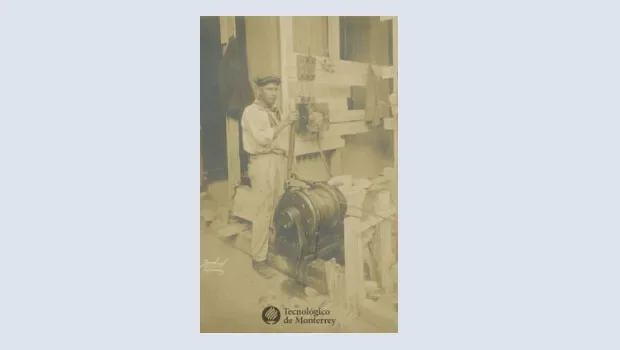
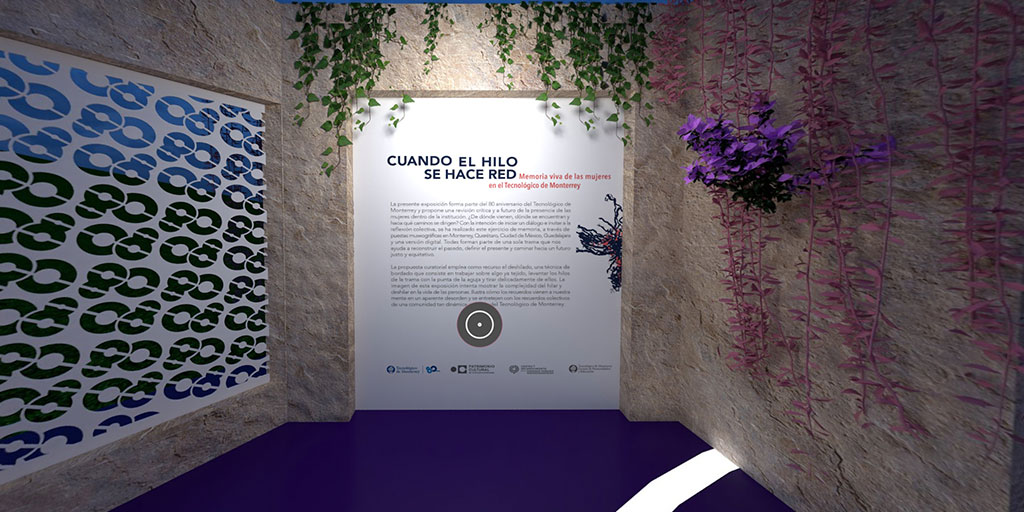
"When a Thread Becomes a Network"
This digital exhibition is part of the museological project developed to celebrate and recognize the contributions of women during the first 80 years of Tecnológico de Monterrey. The project included four physical exhibitions at the Monterrey, Querétaro, Mexico City, and Guadalajara campuses, as well as a digital environment that integrates all locations, ensuring access for the general public.
The five exhibitions were jointly conceptualized by the National Directorate of Cultural Heritage and the Center for the Recognition of Human Dignity, and designed by Mtro. Gabriel Vargas Flores, designer, museographer, and museologist, along with independent curator Mtra. Fabiola Iza, with an intersectional approach and a gender perspective. The materials exhibited were provided by the Fototeca of Tecnológico de Monterrey, the "Miguel de Cervantes Saavedra" Special Collections Library, the Arte AC Collection Archive, and the institution's Artistic Heritage.
This exhibition provides an opportunity to reflect on how to progress toward building a more equitable society and institution that embrace diversity.
